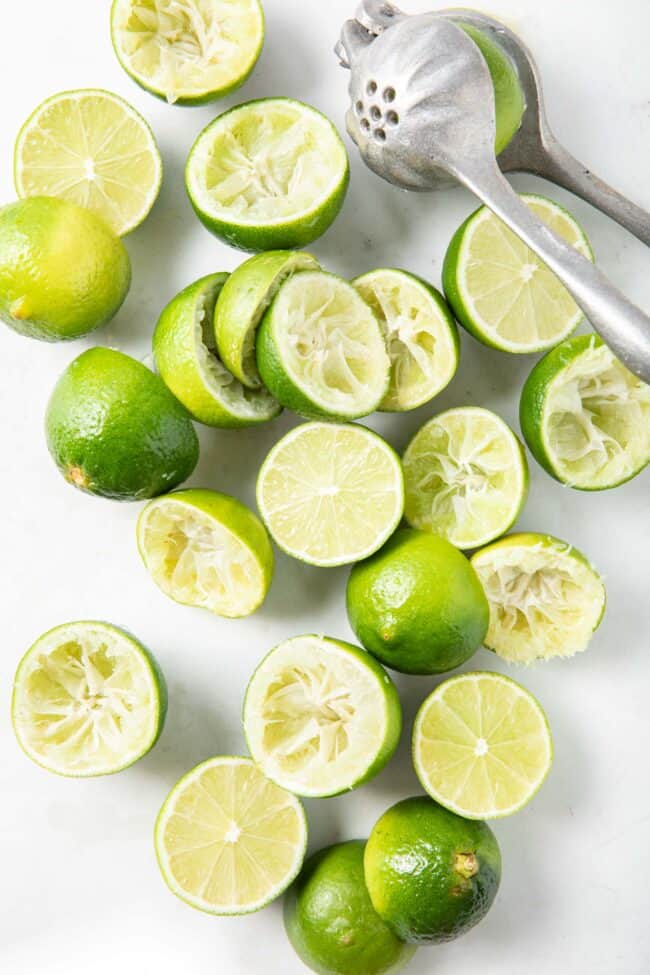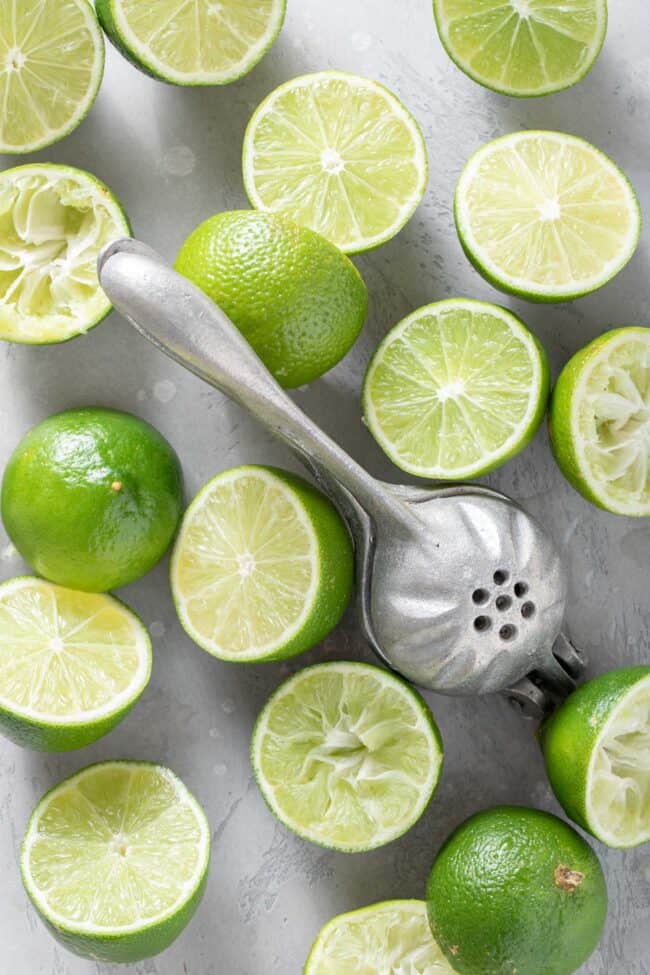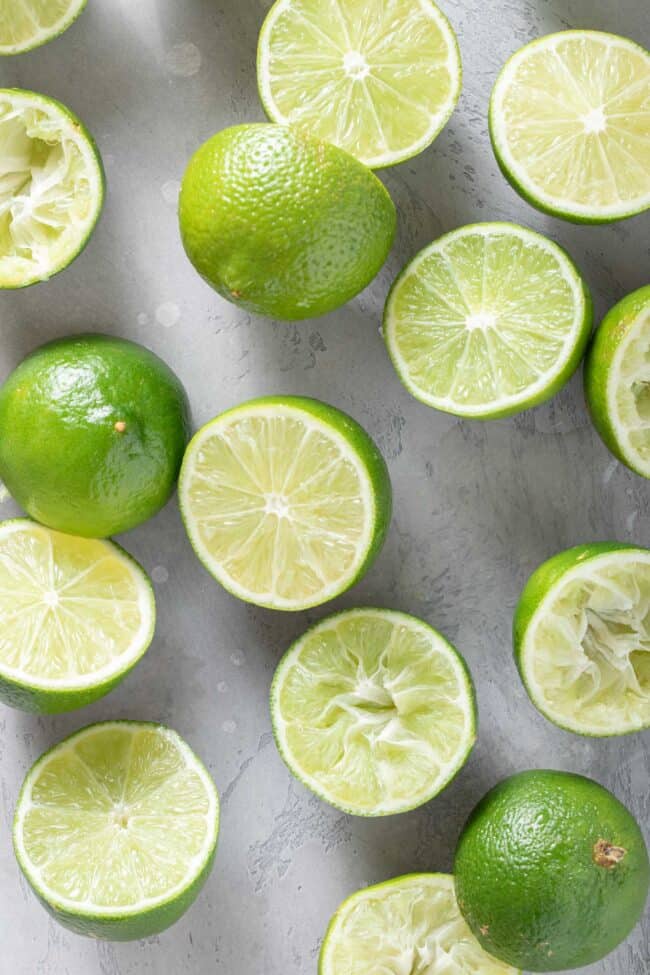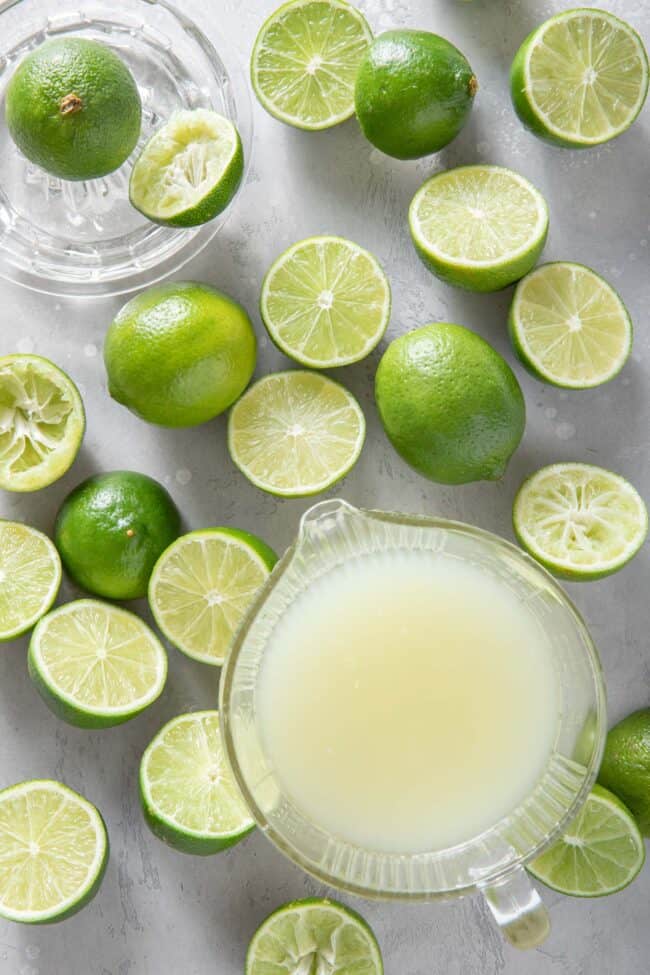How Much Juice in One Lime
Need to know How Much Juice in One Lime? Here’s the quick answer, plus a few helpful tips to know about how to juice limes, how many limes for 1 cup juice, plus 30 recipes using this perky fruit.
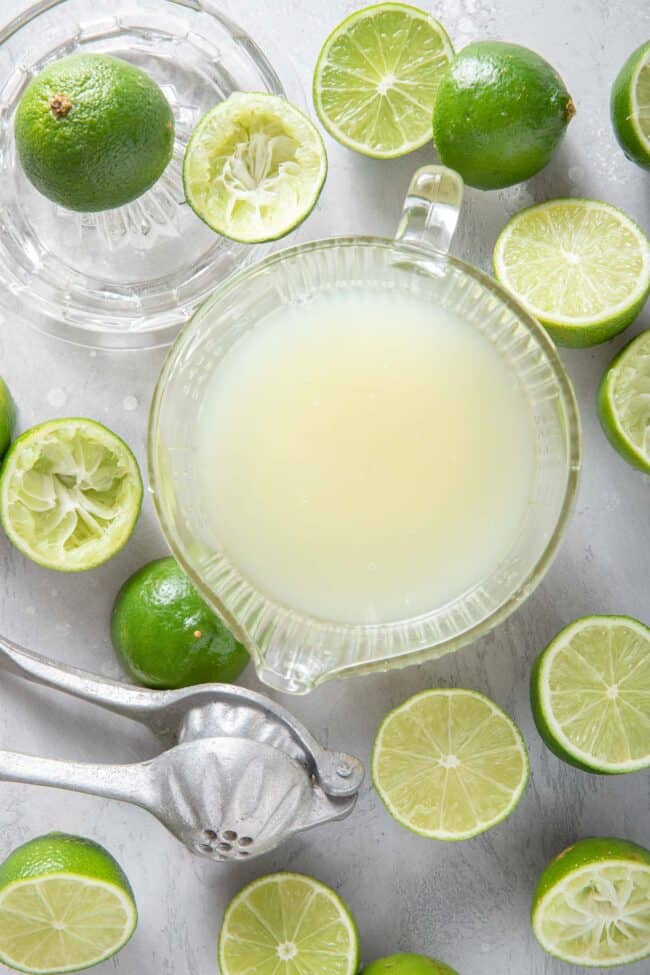
Like lemons, limes are one of the most popular fruits of the citrus family. Not only do they have a delicious flavor and perky scent, they are also rich with vitamins and antioxidants that help boost your immune system.
How Much Lime Juice In One Lime?
Typically 1 large lime will produce 2 to 3 tablespoons of juice and 1 to 2 teaspoons of zest, but that depends on the type of lime used and the size and ripeness of it. The more ripe it is, the more juice it will likely produce. And obviously the larger the fruit, the more juice it will likely produce.
How Many Limes For 1 Cup Juice?
There are 16 tablespoons in 1 cup, so you’ll need about 8 limes to produce 1 cup of lime juice. I always buy a few extra, just in case some of them don’t produce much juice.
- 1 lime = 2 tablespoons juice
- 2 limes = 1/4 cup juice
- 4 limes = 1/2 cup juice
- 6 limes = 3/4 cup juice
- 8 limes = 1 cup juice
How To Juice Limes
Some limes can be tougher to juice than others, and some produce more juice than others. To get the most juice from a lime, the fruit should be room temperature or warmer. You could place them in hot water for a few minutes to warm them. Here are a few tips and tricks to get the most juice from them to add to all your favorite recipes.
- With a lime sitting on a countertop, press down hard with the palm of your hand and roll the lime back and forth a few times. This helps to break the juice away from the pulp.
- Cut the lime in half lengthwise if you are juicing by hand. It’s easier to grip when cut lengthwise.
- Cut the lime in half crosswise if you’re using a juicer or a reamer.
- Using a fork, poke the pulp a few times to loosen up the membranes to release the most juice.
- Use a reamer or juicer to extract as much juice from the fruit as possible.
- If you don’t need all the juice from the fruit at once, then you can pierce it with a toothpick or tip of a sharp knife and squeeze the juice from the opening. Then place it in an airtight plastic bag and refrigerate for future use.
Choosing The Best
Limes should be dark green without any skin wrinkling or moldy spots. The juiciest fruit will give a little when you gently squeeze them. The fruit turns from green to yellow as they ripen. A very coarse thick skin may mean less flesh and less juice. Heavy fruits with finer skins are usually the juiciest.
Types Of Limes
- Kaffir: These are round course-skinned limes that have very little bitter tasting juice.They’re mostly used in Thai cuisine for the zest and their fragrant leaves.
- Key Limes (Also called Mexican Limes): These are smaller and rounder and have more yellow coloring in the skin. They are often used as an ingredient in baking (such as Key lime pie).
- Limequats: These area cross between limes and kumquats. They’re small round with a yellowish color.
- Rangpur: These are tart and very juicy. They’re orange in color and resemble oranges or tangerines. They may be a cross between a lemon and Mandarin orange, but have a lime-like scent.
- Tahiti: Most limes found in grocery stores are Tahitian limes, which comes in two similar varieties – Persian, which are oval, egg-sized fruits cultivated in Florida, and a Bearss variet y is a smaller, seedless fruit that is often grown in California. The Persian variety are what most people think of as “limes”.
Key Limes vs Limes
Key limes are smaller and more yellow than regular limes. They have a thinner skin and contain more seeds. You’ll need more key limes to produce the same amount of lime juice. They’re less tart, more aromatic and a little sweeter than the Persian variety.
Key Lime Juice Substitute
However much key lime juice is called for in your recipe, use a 50/50 mixture of regular lime juice and lemon juice as a substitute. For example if your recipe calls for 1/2 cup key lime juice, you can substitute key lime juice with 1/4 cup lemon juice and 1/4 cup lime juice.
How To Store Them
Whole limes can be stored at room temperature for up to a week and in the refrigerator for 4-6 weeks. They will be juiciest when stored at room temperature. If you won’t be using them within a day or two, then pop them in a zip-lock plastic bag and store them in the crisper section of your refrigerator. You can also freeze them like we did with lemons here (freeze whole lemons) (freeze lemon slices).
How Long Will The Juice Last?
Fresh squeezed lime juice stored in a container with a tight lid will last in the refrigerator for about 3-4 days. The juice can also be frozen in an ice cube tray then transferred to a zip-lock freezer bag if you want to store the juice longer.
Looking For Lime Recipes?
Lime juice can be added to so many dishes in countless ways, and you may not always need to add much, but it always adds a fresh perky taste to any dish. Recipes may not always be specific about how much juice to add, stating instead “juice from one lime” or it may call out 3 tablespoons or 1/4 cup of juice (for example). And other times it just states to squeeze the juice of a lime over a piece of grilled chicken or fish as a finishing touch.
Here are just some of our recipes using this perky citrus fruit:
- Dips: Lime juice is often added to dips like Guacamole, Pico de Gallo, Restaurant Style Salsa, Jalapeno Hummus, and Black Bean Chipotle Dip
- Soups: Stirred into soups like this Mexican Chicken Rice Soup, Vegan Tortilla Soup, Chicken Tortilla Soup, and Chicken Chili
- Skillets and Casseroles: The juice can be added to skillets, stews and casseroles like this Chicken Fajita Casserole and Thai Coconut Chicken Curry
- Salad Dressings: Added to vinaigrettes and salad dressings in this Asian Cucumber Salad, Honey Lime Dressing, Cilantro Lime Vinaigrette, Mexican Watermelon Salad, Mango Arugula Quinoa Salad, Mango Slaw, Healthy Coleslaw, Black Bean and Corn Salad, Avocado Salad Dressing, Spinach Berry Antioxidant Salad, Curried Chicken Mango Salad, Mexican Fruit Salad and Summer Melon Salad
- Water: Lime wedges and slices are often added to infused water and sparkling water
- Popsicles: Use lime juice to make these Mint Lime Popsicles
- Drinks: Cantaloupe Lime Slush
- Sides: Stirred into rice and quinoa Cilantro Lime Quinoa
